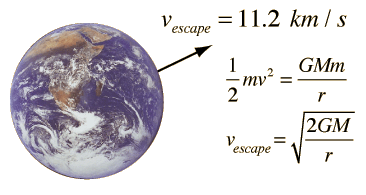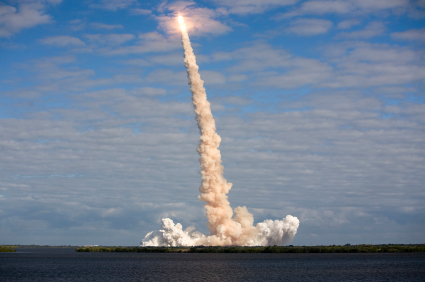
http://hyperphysics.phy-astr.gsu.edu/hbase/vesc.html
| Title |
| Page 2 |
| Page 3 |
| Page 4 |
| Bibliography |
In order to reach escape velocity, the object needs to reach a velocity much, much higher it would require just to escape orbit. Because if a rocket breaks free from orbit and then immediately stops, it is still receiving a force from the Earth and according to Newton's 2nd Law, there is no Force being acted on by the rocket due to having no acceleration. The Earth continuously pulls the rocket back towards the planet. In order to avoid this, the rocket must reach an "infinite" distance away from the Earth.
Conceptually, this means that the rocket must have a larger Kinetic Energy than the Gravitational Energy of the Earth.
KE = GE
(1/2)mv^2 = GMm/R
If we know the mass of the object that must escape the Earth's gravity, then we can find the velocity by moving variables over to find:
v = sqrt(2GMm/R)
For Earth, this simplifies down to 11,000 km/s.

http://www.jasondemakis.com/whats-your-escape-velocity/
It's such a difficult feat to achieve because in order for a spacecraft to reach that speed, it needs an enormous amount of fuel. The more fuel that is added, the heavier the craft becomes, which means it needs to go even faster, but that also requires more fuel. It becomes an endless cycle. This is why the original rockets used for the Apollo missions were so large, it was the only viable vehicle for what it was trying to achieve.